#Android vs iOS Mobile Application
Explore tagged Tumblr posts
Text

Android vs iOS Mobile Application Development Company
Mobile Application Development is a dynamic process that helps businesses and individuals create innovative mobile apps. Big Ladder provides high-performance, user-friendly, and customized mobile app development services. We build cutting-edge solutions for both Android and iOS platforms to accelerate business growth. If you’re looking for a seamless, feature-rich, and engaging mobile application, BigLadder is your trusted partner. Contact us today to bring your app idea to life!
0 notes
Text
#Benefits of Native Application Development#Native App Development Advantages#Why Choose Native App Development#Native vs Hybrid App Development#Advantages of Native Mobile Applications#Native App Development for iOS and Android#Native Mobile App Benefits#Native Application Development Pros#Performance Benefits of Native Apps#Why Build Native Mobile Applications
0 notes
Text
How Location Affects Mobile Application Development Costs?
The cost of mobile application development can vary significantly based on the geographic location of the development team. Understanding how location impacts development costs can help you make informed decisions and optimize your budget effectively.
1. Labor Costs
Labor costs are one of the most significant factors influenced by location. Developers in North America and Western Europe typically charge higher rates compared to those in regions like Eastern Europe, Asia, or Latin America. For example, hourly rates in the US can range from $100 to $150, while in India or Ukraine, rates might be as low as $20 to $50.
2. Access to Talent
The availability of skilled developers varies by location. Countries with a strong tech industry and educational infrastructure, such as the US, Germany, and India, tend to have a higher concentration of experienced developers. This availability can impact both the quality and cost of development, as regions with abundant talent pools may offer more competitive pricing.
3. Operational Costs
The overall operational costs, including office space, utilities, and local taxes, also affect development costs. These expenses are typically higher in major metropolitan areas like New York or London compared to cities in Eastern Europe or Southeast Asia. Lower operational costs can translate to more affordable development rates.
4. Time Zone Differences
Working with developers in different time zones can influence project timelines and communication efficiency. While time zone differences can provide around-the-clock development, they can also pose challenges in coordination and collaboration, potentially affecting project costs due to miscommunication or delays.
5. Quality and Standards
The quality and standards of development can vary by region. Developers in established tech hubs may adhere to higher industry standards and best practices, potentially reducing long-term maintenance costs. Conversely, lower initial costs in some regions might come with the risk of higher maintenance and bug-fixing expenses later on.
Conclusion
Location plays a crucial role in determining mobile application development costs. By considering factors such as labor costs, access to talent, operational expenses, time zone differences, and quality standards, businesses can make strategic decisions to optimize their development budget. Balancing cost with quality and efficiency ensures a successful mobile app development process tailored to your business needs.
#Cost of App Development#Mobile App Development Costs for Startups#Cost comparison of iOS vs Android app development#How Much Does It Cost to Develop A Mobile Application
0 notes
Text
Shopify vs. Woocommerce: Which platform is better in 2024 for your online business?
Read more Blogs,
Visit Website, Glasier Inc.
Hire SaaS developers
#woocommerce vs shopify#shopify vs woocommerce#woocommerce#shopify#web app design#app development company#hire saas developer#hire saas developers#app developing company#ios app development services#ios app development trends#android app development#hire dedicated developers#custom software development#mobile app development company#mobile application development#web application development#app development
1 note
·
View note
Text
Choosing the Pinnacle: A Guide to Selecting Optimal Mobile App Development Services
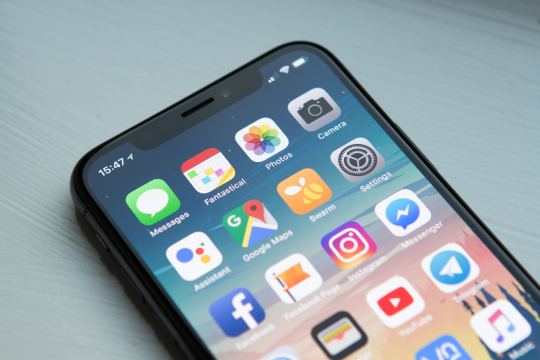
I. Introduction
In the fast-evolving digital era, mobile applications have become indispensable tools for businesses and individuals alike. However, the success of a mobile app heavily relies on the expertise and efficiency of the development services behind it. This article serves as a comprehensive guide to assist in the judicious selection of mobile app development services, ensuring the realization of a robust and successful application.
II. Understanding Your Project Requirements
Defining Project Scope
Crafting a successful mobile app starts with a meticulous definition of the project scope. This involves a detailed analysis of the desired functionalities and features, considering the unique needs of the target audience.
Platform and Technology Considerations
Choosing the right platforms (iOS, Android, or cross-platform) is pivotal. Additionally, selecting appropriate technologies and frameworks that align with the technical requirements of the project is crucial for its success.
III. Assessing Development Expertise
Portfolio Examination
A thorough review of the development company's portfolio is essential. This involves assessing past projects and industry experience, gauging the diversity and complexity of their work to ascertain their expertise.
Client Testimonials and Reviews
Client testimonials and reviews provide valuable insights into the reputation of a development company. Understanding client satisfaction levels, project management efficiency, and adherence to timelines is imperative.
IV. Development Methodologies and Practices
Agile vs. Waterfall Approaches
Choosing between Agile and Waterfall methodologies involves understanding their impact on project flexibility and adaptability. Selecting the most suitable approach is critical for seamless development.
Quality Assurance and Testing Procedures
The development company's approach to quality assurance and testing is paramount. Rigorous testing for functionality, security, and user experience ensures a polished and reliable final product.
V. Cost and Timeline Considerations
Transparent Pricing Models
Understanding different pricing models, including fixed, hourly, and dedicated team arrangements, is crucial. Ensuring transparency in cost breakdowns and anticipating potential additional charges is part of prudent decision-making.
Project Timeline Projections
Establishing realistic project timelines is essential for effective planning. Discussing milestones, deliverables, and potential setbacks ensures a clear roadmap for project completion.
This guide equips decision-makers with the insights needed to navigate the multifaceted process of selecting mobile app development services, laying the foundation for a successful and impactful mobile application.
4 notes
·
View notes
Text
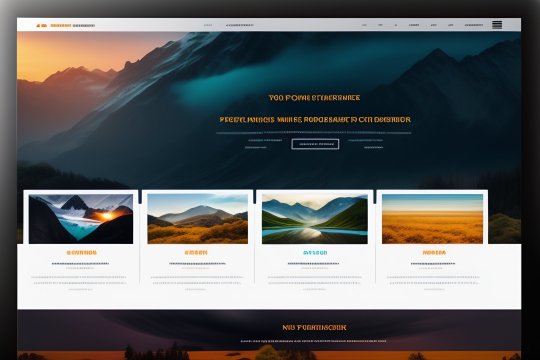
Web App vs. Website vs. Mobile App: Understanding the Differences
In today's digital age, the choice between a web app, website, or mobile app can significantly impact the success of your online presence. Understanding the differences between these options is essential for making informed decisions about your project. In this article, we'll break down the distinctions and explore how ManiWebDev can help you navigate this digital landscape.
Website 🌐
Websites are the digital storefronts of the internet. They primarily serve informational and static content, making them ideal for sharing knowledge, establishing an online presence, or showcasing your business. Key characteristics include:
📚 Primarily informational and static.
🌍 Accessed via web browsers on various devices.
💻 Built with web technologies like HTML, CSS, and JavaScript.
🚀 Examples: Blogs, news sites, company homepages.
Web App 🚀
Web applications, or web apps, are dynamic and interactive platforms accessed through web browsers. They go beyond static content, offering functionalities such as user interactivity, data processing, and real-time updates. Key characteristics include:
🔄 Interactive and dynamic web-based applications.
🌐 Accessed through web browsers.
🛠️ Built with web technologies and often backend technologies.
📊 Examples: Online email clients (e.g., Gmail), project management tools (e.g., Trello).
Mobile App 📱
Mobile applications, or mobile apps, are software programs designed specifically for mobile devices. Users download and install them from app stores like iOS's App Store or Android's Google Play Store. Key characteristics include:
📲 Software applications designed for mobile devices.
📥 Downloaded and installed from app stores (iOS, Android).
🛠️ Developed with platform-specific languages (e.g., Swift, Java).
🎮 Examples: Games (e.g., Angry Birds), social media apps (e.g., Instagram), navigation apps (e.g., Google Maps).
Choosing the Right Solution
The decision between a website, web app, or mobile app depends on your project's goals, target audience, and functionality requirements. It's essential to assess your unique needs and work with professionals who can guide you through the process.
How ManiWebDev Can Help
ManiWebDev is your partner in navigating the digital world. we specialize in creating captivating web experiences, dynamic mobile applications, and feature-rich web apps. Our expertise includes a wide range of web technologies, including HTML, CSS, JavaScript, React, Node.js, and more.
Here's how we can assist you:
Custom Development: We tailor solutions to match your project's specific requirements, whether it's a website, web app, or mobile app.
User-Centric Approach: We prioritize user experience, ensuring that your digital platform is user-friendly and engaging.
Cutting-Edge Technology: Our team stays at the forefront of emerging technologies and industry trends, guaranteeing that your project benefits from the latest advancements.
Comprehensive Services: From design to deployment and maintenance, we provide end-to-end services to bring your digital aspirations to life.
Conclusion
Understanding the differences between websites, web apps, and mobile apps is crucial for making informed decisions about your online presence. ManiWebDev is here to guide you through this journey, offering custom solutions tailored to your needs. Whether you're looking to build a website, a dynamic web app, or a mobile app, we have the expertise to bring your vision to reality. Reach out to us today and embark on a journey to enhance your digital presence.
If you have any questions or would like to discuss your project further, don't hesitate to contact us. Your success in the digital world is our priority!
2 notes
·
View notes
Text
PWA vs Native, Hybrid, SPA, MP: A Complete App Development Guide
In today's digital age, having a mobile app for your business is essential to stay ahead of the competition and cater to the growing needs of mobile users. However, when it comes to an app development company, there are several options to consider; one of them is Nivida Web Solutions Private Limited. Among the various approaches available, Progressive Web Apps (PWAs), Native apps, Hybrid apps, Single-Page Applications (SPAs), and Multi-Platform apps (MP) are the most popular choices. Each of these options has its own strengths and weaknesses. In this comprehensive app development guide, we will compare and contrast these different approaches to help you make an informed decision.
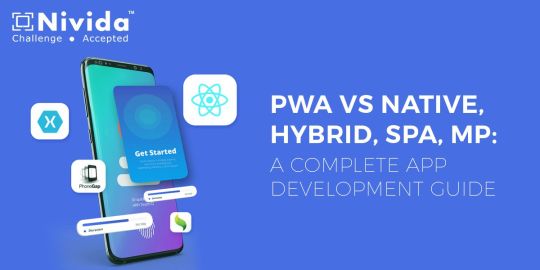
Progressive Web Apps (PWAs):
PWAs are web applications that are designed to look and function like native mobile apps. They are built using web technologies such as HTML, CSS, and JavaScript and are accessible through a web browser. PWAs are highly responsive, installable, and can work offline, making them an excellent choice for businesses looking to reach a wider audience across multiple platforms. Additionally, PWAs can be easily updated without requiring users to download new versions.
Native Apps:
Native apps are developed for specific platforms like iOS or Android using platform-specific languages (Swift or Objective-C for iOS, Java or Kotlin for Android). They offer the best performance, user experience, and access to device-specific features like camera, GPS, and push notifications. However, developing native apps requires separate codebases for different platforms, resulting in higher development costs and longer development cycles.
Hybrid Apps:
Hybrid apps are a combination of web and native apps. They are built using web technologies like HTML, CSS, and JavaScript and are wrapped in a native shell that enables them to be distributed through app stores. Hybrid apps provide a balance between cost-effectiveness and access to native features. However, they may not deliver the same performance as native apps, and certain device-specific functionalities might be limited.
Single-Page Applications (SPAs):
SPAs are web applications that load a single HTML page and dynamically update the content as users interact with the app. They offer a seamless user experience similar to native apps and can be accessed through web browsers. SPAs are easier to develop and maintain compared to native apps, but they may not provide the same level of performance and access to device features.
Multi-Platform Apps (MP):
Multi-platform apps are developed using cross-platform frameworks like React Native, Flutter, or Xamarin. These frameworks allow developers to write code once and deploy it across multiple platforms, saving time and effort. Multi-platform apps can achieve near-native performance and provide access to device features, making them a popular choice for businesses targeting multiple platforms.
When considering app development companies in India or Gujarat, it's essential to find a partner that understands your specific requirements and has expertise in the chosen development approach. Android App development companies in India and Gujarat offer a wide range of services, including native app development, hybrid app development, and PWA development. Similarly, Mobile App development companies in India and Gujarat can provide expertise in developing SPAs and MP apps.
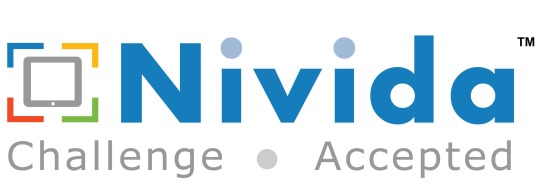
Before choosing an app development approach, consider factors such as budget, target audience, performance requirements, and time-to-market. Each approach has its own pros and cons, and the decision should align with your business goals and objectives. Consulting with a reputable app development company, Nivida Web Solutions Private Limited can help you navigate through these choices and make the right decision for your business.
In conclusion, the choice between PWAs, Native apps, Hybrid apps, SPAs, and MP apps depends on various factors such as performance, cost, development time, and target audience. Each approach has its own merits, and it's important to evaluate them based on your specific needs when selecting an app development company in India.
#eCommerce development company in India#eCommerce development Companies in Gujarat#Mobile App development Companies in India#Mobile App development company in Gujarat#Android App development Companies in India#Android App development company in Gujarat#Digital Marketing company in India
6 notes
·
View notes
Text
Fantasy Cricket App Development: Build the Ultimate App Before the Upcoming Cricket Series 2025
The buzz around fantasy cricket app development is louder than ever as cricket fans across the globe prepare for the upcoming cricket series in 2025, including the India vs Australia bilateral series, Asia Cup 2025, and the much-anticipated T20 World Cup 2025. With millions of users participating in online fantasy leagues, developing a fantasy cricket app is not just a trend—it's a smart business move.
Whether you're a startup, sports enthusiast, or entrepreneur looking to tap into the lucrative world of fantasy sports, now is the ideal time to invest in a fantasy cricket app tailored for the upcoming tournaments.
What is Fantasy Cricket App Development?
Fantasy cricket app development involves creating a digital platform (mobile or web-based) where users form their own virtual cricket teams from real-life players and score points based on players' actual performances in live matches. The better their selected players perform, the more points users earn and the higher their chances of winning real rewards.
A fantasy cricket app should offer a seamless and engaging user experience, real-time data, secure transactions, and features that align with the user intent of cricket lovers: real-time gameplay, rewards, excitement, and community engagement.
Why Fantasy Cricket App Development is Booming in 2025
With upcoming cricket events like the Asia Cup 2025, T20 World Cup 2025, IPL 2025, and India vs Australia series, the fantasy sports industry is set to see a record-breaking number of users. Here’s why this is the perfect time to launch your app:
📈 Rapid User Growth: India alone has over 150 million fantasy sports users.
🏏 High Cricket Engagement: Users spend hours analyzing and picking teams.
💡 Advanced Tech Options: APIs, AI-powered analytics, and real-time updates are easily available.
💰 Profit-Driven Model: Revenue from entry fees, ads, and in-app purchases.
🔐 Secure Legal Framework: Fantasy sports are legally allowed as games of skill in India and many other countries.
Key Features of a High-Performance Fantasy Cricket App
To compete with the big names like Dream11, My11Circle, and MPL, your fantasy cricket app must include:
✅ User Panel Features:
Quick registration/login via email or mobile
Real-time match stats and score updates
User-friendly interface and leaderboard
Multiple contest types (free, paid, private)
Instant wallet integration (deposit/withdrawal)
🛠️ Admin Panel Features:
Manage users, contests, payments, and referrals
Monitor player performance and scoring systems
Handle complaints and support tickets
Push notifications and analytics dashboard
Fantasy Cricket App Development Cost in 2025
The fantasy cricket app development cost varies based on complexity, features, and design. Here's a rough breakdown:
Basic App (Android/iOS): ₹3,00,000 – ₹6,00,000
Mid-level App (Custom UI/UX + Real-time Stats): ₹6,00,000 – ₹10,00,000
Advanced App (Multi-sport, AI, Global Support): ₹10,00,000 – ₹20,00,000+
Working with a professional fantasy sports app development company like IMG Global Infotech ensures a secure, fast, and feature-rich application.
Monetization Strategies for Fantasy Cricket Apps
Wondering how to make money from a fantasy cricket app? These proven methods drive revenue:
💸 Entry Fees for Paid Contests
📊 In-app Advertisements (Google AdMob, Facebook Ads)
🏷️ Premium Memberships
🤝 Sponsorships and Brand Collaborations
📈 Affiliate Marketing and Referrals
Best Technology Stack for Fantasy App Development
To develop a robust, scalable fantasy app, you need a modern and reliable tech stack:
Frontend: React Native, Flutter (for cross-platform)
Backend: Node.js, Laravel, Python (for fast performance)
Database: MongoDB, PostgreSQL
APIs: Cricket Score API (CricAPI, SportsRadar), Payment Gateway (Razorpay, Paytm)
Why Choose IMG Global Infotech for Fantasy Cricket App Development?
IMG Global Infotech is one of the most trusted names in fantasy cricket app development in India, offering customized and scalable fantasy sports solutions. Whether you're building an app like Dream11 or want a unique concept, they deliver:
✅ Seamless user experience
✅ Real-time data sync
✅ Custom contests and AI-based recommendations
✅ Secure wallet system
✅ Post-launch technical support
Their experience in delivering high-performance fantasy cricket apps makes them the preferred choice for entrepreneurs and startups in the fantasy gaming space.
Semantic SEO & Conversational Keywords to Use
When optimizing your site or app page, include the following semantic SEO keywords to improve visibility and ranking:
fantasy cricket app development company
best fantasy cricket app developers
build a fantasy cricket app like Dream11
fantasy sports app solutions India
cost to develop fantasy cricket app
create fantasy app for IPL 2025
fantasy sports app development guide
These keywords match what users are actively searching for in 2025 and help improve topical relevance and search intent targeting.
FAQs – Fantasy Cricket App Development 2025
Q1. Can I create a fantasy cricket app before IPL or T20 World Cup 2025? Yes, this is the ideal time to launch your app before the upcoming cricket events. It ensures maximum user engagement.
Q2. Is fantasy cricket legal in India? Yes, fantasy cricket is considered a game of skill and is legal in most Indian states.
Q3. What is the revenue model of fantasy cricket apps? Fantasy apps earn via contest entry fees, ads, premium plans, and brand sponsorships.
Q4. How long does it take to develop a fantasy cricket app? Basic apps take 2–3 months, while advanced platforms may take 4–6 months depending on features.
Q5. Which company is best for fantasy cricket app development? IMG Global Infotech is highly recommended for fantasy cricket app development with a strong portfolio and custom features.
Final Thoughts
With the T20 World Cup 2025, IPL 2025, and Asia Cup on the horizon, there's never been a better time to invest in fantasy cricket app development. By partnering with expert developers like IMG Global Infotech, you can launch a feature-rich, profitable app that captures the excitement of cricket and turns fans into daily users.
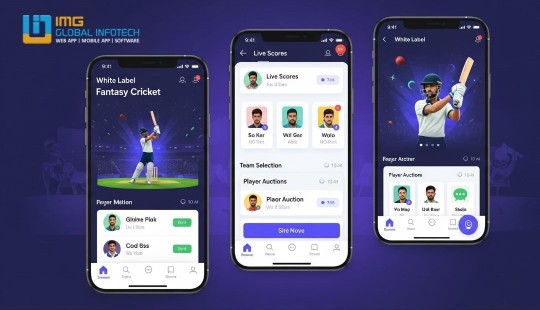
#fantasy cricket app development#fantasy cricket app development company#fantasy cricket app development company in india#fantasy cricket app development cost#fantasy cricket app#app like dream11#img global infotech
1 note
·
View note
Text
Find the Top 5 Latest Mobile App Development Software in 2025 — Expert Picks by TimD — Tim Digital
Choosing the right mobile app development software in 2025 is more than just a technical decision — it’s a strategic advantage. With the growing pressure to deliver faster, reduce bugs, and maintain UI consistency across devices, developers and companies alike are re-evaluating their tech stacks.

Why the Right Mobile Development Stack Makes All the Difference
Many development teams struggle not because of a lack of skill but due to poor tooling and platform fragmentation. Common issues include:
Too much time spent on duplicate codebases
Difficulty managing bugs across platforms
Low design consistency between iOS and Android versions
A better stack can lead to faster time-to-market, fewer bugs, and improved collaboration across teams.
Snapshot: 5 Game-Changing Mobile Development Frameworks
In 2025, five standout mobile development frameworks are leading the way.
Flutter, backed by Google, offers hot reload, expressive visuals, and UI consistency — making it ideal for cross-platform UI precision. React Native, developed by Meta, is JS/TS-based and features fast refresh and a robust plugin ecosystem, best suited for teams transitioning from web to mobile. .NET MAUI, Microsoft’s enterprise-grade solution, combines native speed with C# and deep integration into the Microsoft ecosystem, perfect for unified experiences across mobile and desktop. For Apple-centric development, Swift stands out with hardware-level API access and deep iOS integration, delivering high-performance, iOS-only applications. Lastly, Kotlin, Google’s preferred language for Android, is known for its concise syntax and Jetpack Compose support, making it the go-to choice for scalable, Android-first projects.
1. Flutter — Deliver Visually Consistent Cross-Platform Apps
Backed by Google, Flutter continues to lead the way for teams needing high-performance mobile apps from a single Dart codebase. With its built-in Skia rendering engine, it doesn’t rely on native UI components — giving you full control over visuals on both Android and iOS.
Why It’s a Top Pick:
Rapid UI iteration with Hot Reload
Mature ecosystem on pub.dev
Excellent for MVPs, startups, and custom-designed apps
2. React Native — A Natural Fit for Web Development Teams
Created by Meta, React Native allows JavaScript developers to build native mobile apps without switching tech stacks. It’s ideal for web teams transitioning into mobile, especially with tools like Expo simplifying builds.
Best Use Cases:
Fast deployment using React-based components
Shared codebase between web and mobile
Lightweight apps needing high iteration cycles
3. .NET MAUI — Microsoft’s Unified Solution for Desktop and Mobile
.NET MAUI enables enterprise-grade cross-platform development using C# and XAML. It compiles to native code, ensuring performance, while simplifying development for organizations already using Microsoft tools and Azure.
Why Enterprises Prefer It:
Strong support for desktop/mobile hybrid builds
Full access to native APIs
Streamlined with Visual Studio and Azure DevOps
4. Swift — The Gold Standard for Native iOS App Development
Developed by Apple, Swift is the go-to for building fluid, fast, and fully integrated iOS apps. Combined with SwiftUI or UIKit, it’s the most reliable way to deliver App Store-ready applications with deep device capabilities.
Ideal For:
iOS-only apps
Products that leverage ARKit, Core ML, or HealthKit
Premium apps requiring pixel-perfect animations
5. Kotlin — For Next-Level Native Android Performance
Endorsed by Google and developed by JetBrains, Kotlin is a modern language designed for Android. It brings null safety, concise syntax, and coroutine-based async capabilities, making it a favorite among Android developers in 2025.
Where It Shines:
Clean migration path from Java
Jetpack Compose support for UI innovation
Great for complex, scalable Android apps
Native vs. Cross-Platform vs. Hybrid — What Should You Choose?
When it comes to choosing the right development approach, your decision should align with your product roadmap, team capabilities, and performance expectations. Native development offers the best UX quality and strong scalability, making it ideal for performance-intensive apps — but it comes with higher maintenance needs and moderate development speed. Cross-platform frameworks like Flutter and React Native strike a balance by allowing faster development, lower maintenance, and good scalability, although UX quality may slightly lag behind native builds. On the other hand, hybrid frameworks such as Ionic are fast to develop and easy to maintain but offer limited user experience and only moderate scalability — making them suitable for basic MVPs or internal tools where performance is not critical.
Expert Tip: If your app relies on camera, AR, or sensors — go native. For time-to-market and design parity, cross-platform tools like Flutter or React Native offer the best ROI.
What to Look for in Mobile App Development Platforms
When selecting mobile development tools in 2025, top agencies and development teams recommend looking for:
Real-time debugging and emulation support
Comprehensive UI libraries
CI/CD compatibility (e.g., App Center, GitHub Actions)
Easy deployment to Play Store and App Store
Third-party plugin support for maps, payments, authentication, etc.
Final Thoughts
Whether you’re launching a feature-rich Android app, building an enterprise mobile suite, or rapidly shipping a cross-platform MVP — choosing the right development platform in 2025 is key to avoiding unnecessary rework and scaling with confidence.
If you’re looking for expert guidance, several agencies — like TimD — Tim Digital — are offering tailored consulting and mobile app solutions built on the most robust tools in the market.
👉 Looking for the Best Mobile Apps Development Services in Kolkata? Explore trusted mobile development experts who can help architect your next big idea, fast and friction-free.
Follow us for insights and expert strategies on LinkedIn, Facebook, Instagram, YouTube, Pinterest, and Twitter (X).
#MobileAppDevelopment#AppDevelopmentTools#CrossPlatformDevelopment#FlutterDevelopment#SwiftProgramming#KotlinAndroid#DotNetMAUI#iOSDevelopment#AndroidDevelopment#TechStack2025#TimDigital#TimDTech#SoftwareDevelopment
0 notes
Text
Emulator vs. Real Device Testing: What Should You Choose?

In our first article of the Mobile Application Testing series, we introduced the core concepts of mobile testing—highlighting how mobile apps must be tested across multiple platforms, screen sizes, networks, and user behaviors. We also emphasized how fragmented mobile environments increase the complexity of quality assurance, making robust mobile device testing strategies essential.
Building on that foundation, this blog focuses on one of the most critical decisions mobile testers face:
Should you test your app using emulators or real devices?
Both approaches serve essential roles in mobile QA, but each comes with its own set of advantages, limitations, and ideal use cases. Understanding when and how to use emulator vs real device testing can make your testing strategy more effective, scalable, and cost-efficient.
What is Emulator Testing?
An emulator is a software-based tool that mimics the configuration, behavior, and operating system of a real mobile device. Developers often use Android emulators (from Android Studio) or iOS simulators (from Xcode) to create virtual devices for testing purposes.
These emulators simulate the device’s hardware, screen, memory, and operating system, enabling testers to validate apps without needing physical smartphones or tablets.
✅ Advantages of Emulator Testing
Cost-Effective No need to invest in purchasing or maintaining dozens of physical devices.
Quick Setup Developers can quickly spin up multiple virtual devices with various screen sizes, OS versions, or languages.
Integrated Debugging Tools Emulators are deeply integrated with IDEs like Android Studio and Xcode, offering extensive logs, breakpoints, and performance analysis tools.
Faster for Early Testing Ideal for initial development phases when functionality, UI alignment, or basic workflows are being verified.
❌ Limitations of Emulator Testing
Lack of Real-World Accuracy Emulators can’t replicate real-world conditions like varying network speeds, incoming calls, push notifications, or sensor behavior.
Poor Performance Testing Capability Metrics like battery drainage, CPU usage, and memory leaks are not accurately reflected.
Incompatibility with Some Features Features relying on Bluetooth, NFC, camera APIs, or fingerprint sensors often fail or behave inconsistently.
What is Real Device Testing?
Real device testing involves testing mobile applications on actual smartphones or tablets—physical devices users interact with in the real world. This method allows teams to validate how an app performs across different OS versions, device models, network types, and environmental factors.
✅ Advantages of Real Device Testing
True User Experience Validation You get a real-world view of app performance, responsiveness, battery usage, and usability.
Reliable Performance Testing Tests such as scrolling lag, animations, and touch responsiveness behave authentically on real devices.
Sensor and Hardware Interaction Testing features like GPS, camera, gyroscope, accelerometer, and biometric authentication is only possible on real hardware.
Detect Device-Specific Bugs Certain bugs appear only under specific hardware or manufacturer configurations (e.g., MIUI, Samsung One UI), which emulators might not catch.
❌ Limitations of Real Device Testing
Higher Cost Maintaining a physical device lab with hundreds of devices is expensive and often impractical for small or mid-sized teams.
Manual Setup and Maintenance Devices must be updated regularly and maintained for consistent results.
Scalability Issues Executing automated test suites across many real devices can be time-consuming without proper infrastructure.
When Should You Use Emulators or Real Devices?
The most effective mobile testing strategies combine both approaches, using each at different phases of the development lifecycle.
✔ Use Emulators When:
You’re in the early development phase.
You need to test across multiple screen resolutions and OS versions quickly.
You're writing or debugging unit and functional tests.
Your team is working in a CI/CD environment and needs quick feedback loops.
✔ Use Real Devices When:
You're close to the release phase and need real-world validation.
You need to verify device-specific UI bugs or performance bottlenecks.
You’re testing features like Bluetooth, GPS, camera, or biometrics.
You're evaluating battery consumption, network interruptions, or gesture interactions.
Bridging the Gap with Cloud-Based Testing Platforms
Maintaining a large in-house device lab is costly and hard to scale. This is where cloud-based mobile testing platforms help. These services provide access to thousands of real and virtual devices over the internet—letting you test across multiple platforms at scale.
🔧 Top Platforms to Know
1. BrowserStack
Offers instant access to 3,000+ real mobile devices and browsers.
Supports both manual and automated testing.
Integration with Appium, Espresso, and XCUITest.
Real-time debugging, screenshots, and video logs.
2. AWS Device Farm
Lets you test apps on real Android and iOS devices hosted in the cloud.
Parallel test execution to reduce test time.
Supports multiple test frameworks: Appium, Calabash, UI Automator, etc.
Integrates with Jenkins, GitLab, and other CI tools.
3. Sauce Labs
Offers both simulators and real devices for mobile app testing.
Provides deep analytics, performance reports, and device logs.
Scalable test automation infrastructure for large teams.
Final Thoughts: What Should You Choose?
In reality, it’s not Emulator vs Real Device Testing, but Emulator + Real Device Testing.
Each serves a specific purpose. Emulators are ideal for cost-effective early-stage testing, while real devices are essential for true user experience validation.
To build a reliable, scalable, and agile mobile testing pipeline:
Start with emulators for fast feedback.
Use real devices for regression, compatibility, and pre-release validation.
Leverage cloud testing platforms for extensive device coverage without infrastructure overhead.
At Testrig Technologies, we help enterprises and startups streamline their mobile QA process with a combination of emulator-based automation, real device testing, and cloud testing solutions. Whether you're launching your first app or optimizing performance at scale, our testing experts are here to ensure quality, speed, and reliability.
0 notes
Text
Top React Native App Development Companies to Work With in 2025
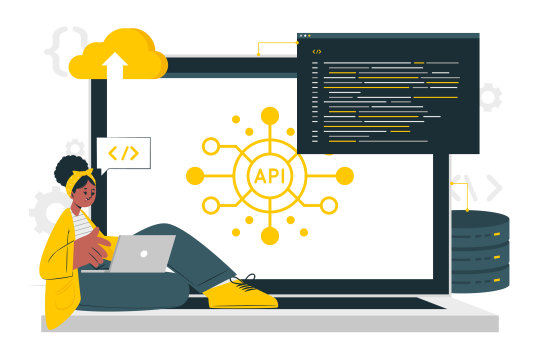
In today’s competitive digital world, businesses are constantly seeking ways to build fast, scalable, and cost-effective mobile apps. One solution that's leading the way is React Native app development. Known for its ability to create high-performing applications for both Android and iOS platforms using a single codebase, it has become the go-to framework for startups and enterprises alike.
The popularity of React Native app development stems from its flexible architecture, community support, and the ease it provides for integrating native modules. Whether you're launching a simple MVP or a feature-rich enterprise app, React Native simplifies the development process while ensuring a smooth user experience.
When it comes to Hybrid vs Native Apps, the debate continues—but React Native cleverly combines the best of both worlds. It allows developers to write once and deploy across platforms, reducing time-to-market and development costs significantly.
Moreover, if you’ve ever wondered, Which Mobile App Framework Suits Your Business – Flutter or React Native?, it's important to analyze your business goals, app complexity, and budget. While Flutter is growing in popularity, React Native offers better JavaScript support, larger community resources, and broader plugin availability.
A standout benefit of React Native app development is that it enables Cross platform development. This means fewer resources, faster testing, and easier maintenance—all while delivering native-like performance.
The Power of React Native in Modern App Development
React Native, backed by Facebook, uses JavaScript and React to build natively rendered apps. With features like hot-reloading, third-party plugin integration, and reusable components, it has become a favorite among developers and product teams.
An interesting trend is the rise of Detailed Tutorial on React Server Side, which showcases how server-side rendering (SSR) with React Native can improve load times, SEO performance, and user experience—especially for mobile web apps and hybrid solutions. Incorporating server-side rendering into your React Native app development process not only boosts performance but also helps in making applications more discoverable through search engines. Another key point to consider is scalability. React Native’s modular architecture and easy integration with native APIs make it ideal for businesses aiming for long-term growth and app flexibility.
Book an Appointment
Want to explore how React Native fits into your mobile strategy? Book an appointment with our React Native consultants today for a free demo and project roadmap.
Choosing the Right React Native App Development Partner
Choosing a trusted development partner can make or break your mobile strategy. The market is filled with numerous agencies and freelancers, but only a few offer proven expertise, full-stack capabilities, and tailored solutions.
That’s why we’ve curated a list of the Top 10 React Native App Development Companies that you can confidently collaborate with in 2025:
Toptal – Known for its elite pool of React Native developers.
MindInventory – Offers both React Native and backend services for full-stack development.
Appinventiv – Provides customized mobile solutions using React Native.
Netguru – Delivers quality UI/UX with React Native speed.
Simform – Offers agile development and enterprise-grade React Native apps.
GeekyAnts – Actively contributes to the React Native ecosystem.
Zco Corporation – Great for startups looking for cost-effective solutions.
WillowTree – Enterprise-level development with a design-first approach.
Fueled – Popular among funded startups.
Hidden Brains – Known for global delivery and scalable app solutions.
Partnering with these companies ensures your React Native app development process is seamless, strategic, and future-ready.
React Native vs Other Frameworks: A Practical Outlook
Let’s revisit the big question: Which Mobile App Framework Suits Your Business – Flutter or React Native?
While Flutter has its advantages like custom widgets and Dart-based programming, React Native still leads in terms of maturity, JavaScript ecosystem, and ready-to-use plugins. It's particularly ideal for businesses that already have web apps built with React.js.
React Native app development also offers easier integration with existing systems, especially if you’re planning a mobile-first transition from a traditional web-based system.
Additionally, businesses focused on scalability often leverage Cross platform development using React Native to maintain code consistency across devices and platforms. This not only accelerates deployment but also reduces ongoing maintenance overheads.
What’s New in React Native for 2025?
With every update, React Native evolves to offer more stability, performance, and developer tools. In 2025, the focus will shift further towards better support for Detailed Tutorial on React Server Side integration, accessibility improvements, and enhanced debugging tools.
Moreover, companies are investing in hybrid strategies due to growing confidence in the performance capabilities of React Native. The Hybrid vs Native Apps conversation is fading as businesses realize that hybrid frameworks like React Native can now deliver native-like speed, look, and feel. Still, if you're unsure, a good development company will help you decide the best fit based on your business requirements.
Final Thoughts
Whether you’re a startup or an enterprise, embracing React Native app development can significantly streamline your mobile strategy. It’s cost-effective, developer-friendly, and ideal for Cross platform development.
From enhancing your app’s performance using Detailed Tutorial on React Server Side to understanding the debate between Hybrid vs Native Apps, React Native continues to prove itself as a forward-looking solution. And when asking Which Mobile App Framework Suits Your Business – Flutter or React Native?, the answer increasingly favors React Native due to its maturity and community-driven growth.
When you're ready to transform your mobile app vision into reality, choosing from the Top 10 React Native App Development Companies can ensure your project is in expert hands.
So what are you waiting for? Your next big mobile success story begins with React Native app development.
0 notes
Text
How Can Companies Optimize ROI by Converting Android Apps to iOS (or Vice Versa)?
Optimize ROI by Converting Android Apps to iOS
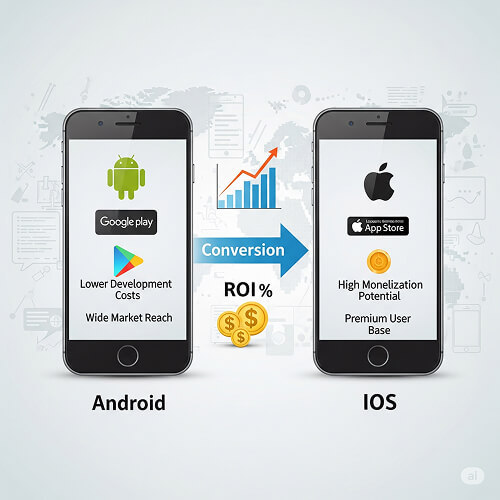
Introduction
In today’s mobile-first landscape, companies aiming to maximize their mobile app ROI must consider platform expansion. With Android dominating in user volume and iOS leading in revenue generation, converting your app from Android to iOS (or vice versa) can be a strategic move to reach a broader audience and boost profitability. This blog explores how app conversion can be a growth catalyst, helping businesses lower acquisition costs and increase user engagement across platforms.
Understanding Android to iOS App Conversion (or Vice Versa)
App conversion refers to the process of adapting an existing mobile application to operate on a different platform. Whether moving from Android to iOS or the reverse, this process involves more than just copying code. It includes reworking the UI/UX, adapting to platform-specific APIs, and ensuring functional parity across devices. Successful app conversion demands expertise in both Android and iOS app development to maintain performance and user satisfaction.
Top Reasons to Convert Android Apps to iOS (or Vice Versa)
Reach a wider audience: Tap into new user segments by expanding your presence to another platform.
Increase revenue potential: iOS users typically have higher lifetime value, while Android's larger user base can fuel ad-driven revenue models.
Improve brand presence: Being available on both platforms builds credibility and trust with users.
Maximize previous investments: Reusing assets and backend systems speeds up time-to-market and reduces development costs.
How App Conversion Improves ROI
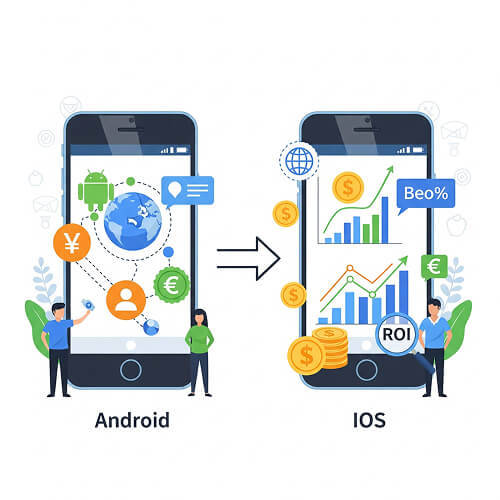
Converting your app allows you to scale without starting from scratch, which significantly lowers development costs. The ability to reach more users boosts installs, engagement, and revenue. Moreover, a cross-platform presence strengthens brand authority and opens doors to new monetization opportunities, like in-app purchases or subscriptions, ultimately maximizing return on investment.
Key Challenges in Mobile App Platform Conversion
UI/UX differences: iOS and Android have distinct design languages (Material vs. Human Interface Guidelines).
Technical variations: Differences in programming languages (Java/Kotlin for Android vs. Swift/Objective-C for iOS).
Third-party integration compatibility: Not all libraries and SDKs work identically across platforms.
Testing requirements: Each platform has its own device ecosystem and app store policies.
Steps to Successfully Convert Your Mobile App
Audit existing app code and features
Choose the right development approach (native or cross-platform)
Redesign UI/UX to fit the new platform standards
Adapt backend APIs and third-party services
Test extensively across devices and OS versions
Deploy to the relevant app store with optimized listings
Tools & Technologies for App Conversion
Flutter: Ideal for creating a single codebase for both platforms
Kotlin Multiplatform: Enables code sharing between Android and iOS
React Native: Popular framework for cross-platform mobile development
Xamarin: Microsoft-backed tool for .NET-based apps
Choosing the right tech stack depends on performance needs, UI complexity, and existing code structure.
Cost Estimation & ROI Forecasting
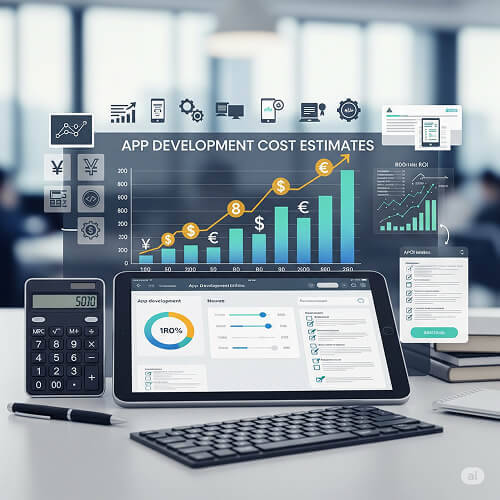
App conversion is typically more cost-effective than building a new app from scratch. Factors affecting cost include app complexity, UI redesign, and backend changes. Companies should calculate potential ROI by comparing conversion cost with projected increase in user acquisition, engagement, and revenue across the new platform.
Case Studies: App Conversion Success Stories
Example 1: A retail app that expanded from iOS to Android and saw a 40% increase in monthly active users
Example 2: A SaaS product that moved from Android to iOS, leading to a 30% boost in in-app purchases These examples showcase how strategic app conversion can result in measurable growth.
Tips to Maximize ROI After Converting Your App
Invest in App Store Optimization (ASO) for visibility
Launch targeted marketing campaigns on the new platform
Monitor analytics closely to track engagement and retention
Solicit user feedback to continuously refine the app experience
Conclusion
Converting your Android app to iOS or vice versa is not just a technical decision—it's a business strategy. When done right, it can significantly enhance user reach, reduce development overhead, and boost ROI. By partnering with an experienced app development company like CQLsys Technologies, you can ensure a smooth transition and unlock new growth opportunities across platforms.
#AppMigration#MobileStrategy#AppMarketing#TechROI#DigitalGrowth#AppScaling#iOSDeveloper#AndroidDeveloper#MobileSolutions#BusinessTech#UserEngagement#RevenueGrowth#AppUpgrade#TechTips#CQLsysTech#Innovation
0 notes
Text
What Does It Really Cost to Build an App? Here's the Breakdown

In today's digital world, mobile apps have become integral to businesses, offering a wide range of services to enhance user experience, improve customer engagement, and streamline operations. Whether you are looking to develop an Android app for your startup or a cross-platform application for your enterprise, understanding the cost to develop an Android app is crucial. The process involves several stages, from ideation to design, development, testing, and deployment, each of which influences the overall cost. App development can vary significantly depending on various factors such as complexity, features, location of the development team, and much more. In this blog, we'll break down the factors that affect app development costs and provide you with an overview of the budgeting process.
Factors Affecting the Cost to Develop an Android App
The cost to develop an Android app depends on a variety of factors, including the app’s functionality, design, platform (Android, iOS, or both), and the location of the development team. Let's take a deeper look at each of these key factors:
1. App Complexity
One of the primary factors that affect app development costs is the complexity of the app. Simple apps with basic functionality—such as a calculator, to-do list, or a weather app—are relatively inexpensive to develop. On the other hand, more complex apps that require advanced features such as integration with third-party APIs, user authentication, real-time data synchronization, or geolocation features will cost significantly more.
A typical app development process includes three main types of app complexity:
Simple Apps: Basic features with limited functionality.
Moderately Complex Apps: Includes features like user accounts, notifications, or APIs.
Complex Apps: Includes advanced functionality like AR/VR, AI/ML capabilities, or large-scale data handling.
Each level of complexity directly impacts the amount of time and resources needed to complete the project, driving up costs.
2. Design Requirements
The design of the app is another factor that plays a significant role in determining the overall cost. A simple, functional user interface (UI) might be quicker and cheaper to develop. However, a visually stunning and user-friendly UI with custom graphics, animations, and a unique user experience (UX) will require more effort from designers, leading to higher costs.
App designs also include elements like:
Wireframing and prototyping
UI/UX design
Branding and visual elements
A polished, user-friendly app design is critical to ensuring high user engagement and satisfaction, and therefore, investing in quality design can improve the long-term success of the app.
3. Platform (Android vs. iOS vs. Cross-platform)
When you decide to build an app, one of the first decisions you’ll need to make is which platform to target—Android, iOS, or both. The cost to develop an Android app can differ greatly from building for iOS or creating a cross-platform app.
Android App: Building an app specifically for Android devices is generally cheaper compared to developing for iOS due to the larger pool of Android developers and fewer restrictions in the app store approval process.
iOS App: iOS development tends to be more expensive due to the need for specialized developers and stricter guidelines for app approval.
Cross-Platform App: Cross-platform development, which allows you to target both Android and iOS with a single codebase, can be a more cost-effective option. However, depending on the complexity of the app, it may still incur additional costs for optimization across different platforms.
4. Development Team Location
The location of the development team has a significant impact on the cost. The hourly rates of developers vary across different countries and regions. For instance:
North America and Western Europe: Typically, the hourly rate for app development is higher, ranging from $100 to $250 per hour.
Eastern Europe: Developers in countries like Ukraine or Poland offer competitive rates, ranging from $50 to $100 per hour.
India and Southeast Asia: Developers in these regions generally charge lower rates, from $20 to $50 per hour.
While outsourcing to regions with lower hourly rates can reduce development costs, it's important to consider potential challenges like communication barriers, time zone differences, and varying quality standards.
5. App Maintenance and Updates
Once your app is live, ongoing maintenance and updates are necessary to ensure it runs smoothly, stays secure, and remains compatible with the latest operating systems. Regular updates also ensure that bugs are fixed, new features are added, and security patches are applied.
Maintenance costs typically account for 15-20% of the initial development cost annually. This includes bug fixes, performance improvements, and updates to accommodate new OS versions and devices.
6. Third-party Integrations and Features
Integrating third-party services such as payment gateways, social media platforms, cloud services, geolocation tools, or AI-powered tools can significantly increase the app’s cost. These integrations often require additional time and resources for development and testing.
7. App Testing
Testing is another essential component that adds to the overall cost of development. Thorough app testing ensures that the app works seamlessly across multiple devices and operating system versions. The more comprehensive the testing process (including unit tests, user acceptance tests, and security testing), the higher the cost.
Using a Mobile App Cost Calculator
To help you estimate the cost to develop an Android app, a mobile app cost calculator can be a useful tool. It allows you to input key details such as app features, design complexity, and development time to get a more accurate cost estimate. Although these calculators provide a general idea of the costs involved, it’s important to consult with an experienced app development team for a more precise quote based on your specific project needs.
If you're interested in exploring the benefits of Android App Development Company for your business, we encourage you to book an appointment with our team of experts.
Book an Appointment
Choosing the Right Android App Development Company
When planning to develop an app, one of the most important decisions is selecting the right Android app development company. An experienced company can guide you through the entire process, from concept to launch, and ensure that the project stays within budget and timeline. They can also provide valuable insights into optimizing the app for user experience and ensuring it’s built with scalability in mind.
Before choosing a development company, it’s essential to:
Review their portfolio and past projects
Check client testimonials and reviews
Assess their expertise in your app’s specific industry or functionality
Discuss their approach to project management, communication, and testing
By partnering with the right team, you can ensure that your app is not only cost-effective but also meets your business goals and user expectations.
Conclusion
The cost to develop an Android app varies widely based on factors such as complexity, design, platform, and development team location. While it’s crucial to have a clear understanding of these factors, it’s equally important to choose an experienced app development company that can help you navigate the entire process efficiently. With the right approach, your app can be a valuable asset to your business, providing users with an exceptional experience and driving long-term success.
To take the first step toward bringing your app idea to life, consider partnering with an experienced Android app development company that can help you transform your vision into a reality. Reach out today for a consultation and start building the app of your dreams!
0 notes
Text
RCS Message Explained: Why It’s the Future in RCS vs SMS Battle
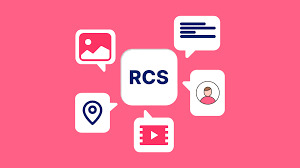
RCS Message: The Future of Mobile Texting in the RCS vs SMS Era
In today’s fast-paced digital age, the way we communicate is undergoing a massive transformation. Enter the RCS message, or Rich Communication Services—a modern solution built to overcome the outdated limits of SMS. As smartphones become smarter, the shift from traditional texting to RCS messaging is gaining momentum, and for good reason.
Unlike SMS, which restricts users to 160 characters and lacks multimedia support, RCS message platforms offer a full-featured communication experience. Think of it as bringing the best of chat apps directly into your default messaging app—no downloads, no third-party logins, just seamless interaction.
What Exactly Is an RCS Message?
To clarify, RCS message technology is the next-generation protocol that enhances messaging on mobile devices. Instead of sending only basic text, you can now share high-resolution photos and videos, see typing indicators, get read receipts, and even use smart replies. All of this happens within the native messaging app, making it incredibly user-friendly.
Furthermore, rcs message systems sync across multiple devices, allowing users to switch from their phone to a tablet without losing the conversation thread. This cross-device functionality significantly improves productivity and user experience.
Key Features of RCS Messaging
Compared to traditional texting, the feature set of an rcs message is far more advanced. Here are a few reasons why it’s gaining ground in the rcs vs sms debate:
Multimedia Sharing: Send videos, audio files, and images in high quality.
Typing Indicators & Read Receipts: Know when someone’s typing or has seen your message.
Group Chat Enhancements: Enjoy seamless group coordination with thread replies and message reactions.
Verified Business Accounts: Communicate safely with verified brands.
Interactive Elements: Buttons like "Buy Now" or "Track Order" streamline tasks.
Additionally, these enhancements make conversations more natural and efficient—whether you’re planning a trip with friends or checking on an online order.
RCS vs SMS: Why the Shift Matters
The rcs vs sms comparison often boils down to capability and user experience. SMS lacks modern features and security protocols, while rcs message platforms offer encrypted communication, real-time delivery updates, and a more app-like interface.
Moreover, in the rcs vs sms battle, RCS stands out by offering richer, branded messaging for businesses. This means customers can interact with companies in a personalized, visual, and engaging way—something SMS simply can’t match.
RCS Messaging for Businesses: A New Frontier
From a business standpoint, the rcs message model is a major breakthrough. Brands can now engage customers using branded messages, interactive product carousels, and AI chatbots—all without requiring an app.
More importantly, platforms like LeminAi allow small businesses to create these engaging campaigns without technical expertise. For example, retailers can send promotional offers with images and buttons; logistics companies can offer real-time delivery tracking; and healthcare providers can simplify appointment confirmations.
As a result, customer engagement and satisfaction increase significantly, giving businesses a competitive edge in communication.
How to Enable RCS Messaging on Your Device
Switching to rcs message technology is incredibly easy. Here's how to activate it:
On Android:
Open Google Messages
Tap your profile photo
Go to Settings > RCS Chats
Toggle it ON
On iPhone (iOS 18+):
Open Settings
Tap Messages
Turn ON RCS Messaging
Once both parties have RCS enabled, you'll notice instant upgrades—smoother chats, enhanced media sharing, and a more connected experience.
Real-World Applications of RCS Messaging
Across industries, rcs message technology is proving its value:
Retail: Shoppers get visually rich promotions and one-click purchase options.
Healthcare: Patients confirm appointments through interactive messages.
Customer Support: Service agents provide quick, visual responses using automated tools.
Even better, since RCS works within the native messaging app, there’s no learning curve for users or customers.
Final Thoughts: Embracing the Future of Communication
In conclusion, the rcs message is not just a trend—it’s the future of mobile communication. Its features make texting more dynamic, intelligent, and responsive. Compared to SMS, it delivers a far richer and more personalized experience, both for users and businesses.
Whether you're chatting casually, sharing media, or interacting with a brand, RCS makes the process smarter and more intuitive. As more carriers and devices adopt this technology, the RCS revolution is well underway—proving that in the battle of rcs vs sms, RCS is the clear winner.
Now is the time to upgrade how you message—because the future is already typing
0 notes
Text
Mobile App Development Secrets for 2025

In our hyper-connected world, mobile apps drive everything—from grabbing your morning coffee to handling your finances. Behind every amazing app lies a technology stack that not only powers great performance but also sets the stage for future growth. Whether you're starting with a minimum viable product (MVP) or mapping out a full-scale digital strategy, choosing the right development tools is critical.
What Are Mobile App Development Technologies?
Mobile app technologies include all the programming languages, frameworks, platforms, and tools used to build apps for your smartphone or tablet. Think of it like crafting your favorite recipe: you need the right ingredients to create something truly special. The choices you make here influence the development speed, cost, performance, and overall user experience of your app.
Native vs. Cross-Platform Development: Finding Your Fit
One of the biggest early choices is whether to go native or cross-platform. Let’s break it down:
Native Mobile App Development
Native apps are developed specifically for one platform—either iOS or Android, using platform-centric languages (Swift for iOS or Kotlin for Android). This approach offers best-in-class performance, smoother integration with device hardware, and top-tier user experiences.
Pros:
Best performance
Full access to device features (think camera, GPS, etc.)
Seamless updates with the operating system
Cons:
Requires two separate codebases if you need both iOS and Android
Typically more time-consuming and expensive
Ideal for high-demand sectors such as banking, gaming, healthcare, or AR/VR applications.
Cross-Platform Mobile App Development
Frameworks like Flutter and React Native let you craft a single codebase that deploys across both iOS and Android. This approach is great for faster development, reduced costs, and consistent design across platforms—but might trade off a bit on native performance.
Pros:
Quicker turnaround and lower development costs
Consistent UI experience across devices
Cons:
May have limited access to some native device features
Slight performance differences compared to native solutions
Perfect for startups, MVPs, and businesses with tighter budgets.
The Leading Frameworks in 2025
Let’s look at some of the coolest frameworks shaking up mobile app development this year:
Flutter
Language: Dart
By: Google
Flutter is renowned for its beautifully customizable UIs and high performance across different platforms using just one codebase. It’s a favorite if you need a dynamic, pixel-perfect design without the extra overhead.
React Native
Language: JavaScript
By: Meta (Facebook)
If you’re from a web development background, React Native feels like home. It uses reusable components to speed up prototyping and quickly bring your app to life.
Kotlin Multiplatform
Language: Kotlin
By: JetBrains and Google
A newer, exciting option, Kotlin Multiplatform allows for sharing core business logic across platforms while giving you the flexibility to build native user interfaces for each.
Swift and SwiftUI
Language: Swift
By: Apple
For purely iOS-focused projects, Swift combined with SwiftUI offers robust performance and a seamless integration with the Apple ecosystem, perfect for apps needing advanced animations and responsiveness.
Hybrid Approaches
Using web technologies like HTML, CSS, and JavaScript wrapped in native containers, hybrid apps (via frameworks like Ionic or Apache Cordova) let you quickly convert an existing website into a mobile app. They’re great for rapid development but might not always match the performance of native apps.
Trends Shaping Mobile App Development
Looking ahead to 2025, several trends are redefining how we build mobile apps:
Next-Level AI and Machine Learning: Integrating on-device AI (using tools like Core ML or TensorFlow Lite) can help personalize experiences and power innovative features like voice assistants.
Wearable Integration: With the rise of smartwatches and fitness trackers, native development for wearables is booming.
5G and Real-Time Experiences: As 5G networks expand, expect more apps to offer real-time features and smoother interactions, especially in areas like gaming and AR.
Low-Code/No-Code Platforms: For rapid prototyping or internal tools, platforms that simplify app creation without deep coding knowledge are becoming increasingly popular.
Choosing the Right Tech for Your App
Before you jump into development, ask yourself:
What’s Your Budget?
Limited funds? Cross-platform options like Flutter or React Native might be perfect.
Budget is less of an issue? Native development can deliver that extra performance boost.
How Fast Do You Need to Launch?
If time-to-market is key, cross-platform frameworks speed up the process.
For a more robust, long-term solution, native apps may be worth the wait.
Which Features Are Essential?
Need deep hardware integration? Native is the way to go.
For straightforward functionality, a hybrid approach can work wonders.
What’s Your Team’s Expertise?
A team comfortable with web technologies might excel with React Native.
If your developers are seasoned in iOS or Android, diving into Swift or Kotlin may yield the best results.
Final Thoughts
There isn’t a magic bullet in mobile app development—the best choice always depends on your unique objectives, budget, timeline, and team. If you’re looking for high performance and don’t mind investing extra time, native development is ideal. However, if speed and cost-efficiency are your top priorities, cross-platform frameworks like Flutter or React Native offer tremendous value.
At Ahex Technologies, we’ve partnered with start-ups, small businesses, and enterprises to build tailored mobile solutions that fit their exact needs. Whether you’re at the ideation stage or ready to scale up, our team is here to help you navigate the tech maze and set your app up for long-term success.
Questions or Thoughts?
I’m curious, what trends in mobile app development are you most excited about for 2025? Feel free to share your insights, ask questions, or start a discussion right here. Let’s keep the conversation going!
#ahex technologies#android mobile app development company#android application development company#mobile application development#mobile app development
0 notes
Text
Getting Started with Mobile App Development: A Practical Guide for Beginners and Businesses

In today's fast-moving digital world, mobile apps are no longer a luxury—they’re a necessity. Whether you're a startup founder, a healthcare innovator, or a business owner trying to modernize operations, diving into mobile app development is one of the smartest moves you can make. From idea to execution, the journey may feel overwhelming at first, but once you break it down, it's surprisingly achievable.
Let’s walk through what it really takes to get started with mobile app development—specifically for iOS platforms, hiring the right team, and creating something impactful, like a healthcare mobile app that could truly change lives.
Why Mobile App Development Matters More Than Ever
We live in a world where everything—banking, shopping, learning, and even managing health—is handled through smartphones. Apps aren’t just about convenience anymore; they’re about delivering value at the speed of life.
For businesses, a mobile app opens doors to direct customer engagement, streamlined operations, and new revenue streams. For users, it means instant access to solutions they need, right in their pockets.
Whether you’re a founder or a product manager, understanding the fundamentals of mobile app development will give you a strategic advantage. And if you're operating in industries like healthcare, that knowledge could empower you to create apps that genuinely improve patient outcomes.
Choosing the Right Platform: iOS vs Android
One of the first choices you’ll face is whether to build your app for iOS or Android. Ideally, you’d do both. But if you're just starting out, iOS often makes for a smoother entry point.
Why iOS?
Higher Revenue Potential: iOS users tend to spend more on apps and in-app purchases.
Consistency Across Devices: Unlike Android’s fragmented device ecosystem, iOS development focuses on a limited set of Apple devices, making testing and optimization easier.
Security: Apple’s stringent app review process ensures a safer ecosystem, which is especially important for apps dealing with sensitive data, like healthcare mobile apps.
While Android commands a larger global market share, many startups choose to build for iOS first, learn from user behavior, and then scale to Android.
Hiring the Right Team: The Power of Skilled Developers
You might be wondering: Should I learn to code myself? While tools like Flutter or React Native offer beginner-friendly ways to prototype apps, scaling a high-quality application usually means you need to hire mobile app developers.
Here's why a professional team is crucial:
Experience: Skilled developers know how to turn your vision into a polished, scalable app.
Efficiency: They save you time by avoiding common pitfalls.
Security & Compliance: Especially in sectors like healthcare, you need people who understand regulations like HIPAA and know how to build secure apps.
When choosing developers, look for a team that has experience in your niche. For example, if you’re building a medical app, you’ll want developers who have built healthcare mobile app development projects before. This is not just about writing code—it’s about understanding user needs, compliance, and integrating with systems like EMRs or wearable devices.
A great example of a company that bridges this gap is SMTlabs. They’ve worked on scalable app solutions across various industries, including healthcare, helping clients bring their vision to life with speed and precision.
Healthcare Mobile App Development: Building for Trust and Impact
If you're thinking about building a healthcare mobile app, congratulations—you’re stepping into a space with real potential to change lives. But this also means extra responsibility.
Here’s what you need to keep in mind:
User Privacy: Data sensitivity in healthcare is unmatched. You'll need to comply with regulations like HIPAA (in the U.S.) or GDPR (in the EU).
User Experience: The people using your app might be seniors, patients recovering from surgery, or overworked healthcare professionals. Simplicity is everything.
Integration: Many healthcare apps need to talk to other platforms—like Apple Health, FitBit, or hospital databases. Building these connections securely is a job for pros.
In healthcare, trust is everything. A small bug or confusing interface can cost not just users, but reputations. That’s why hiring experienced developers with a healthcare portfolio is non-negotiable.
From Idea to Launch: The Development Process
Whether you’re launching a telehealth platform or a simple fitness tracker, the development process usually includes:
Discovery Phase: Define your app’s purpose, target audience, and key features.
Wireframing & Design: Create mockups of the user interface.
Development: Code the app’s front-end (user interface) and back-end (server, databases).
Testing: Debugging, performance optimization, and user feedback.
Launch & Maintenance: Submit to app stores, monitor performance, and release updates.
And don’t forget post-launch support. The best apps evolve based on user feedback.
What About Budget?
Costs vary widely. A basic iOS app might cost $10,000 to $30,000. A complex healthcare mobile app could run upwards of $100,000, depending on features and security requirements. Hiring offshore developers can lower costs, but be cautious—poor code quality often leads to expensive rewrites.
Instead, work with a trusted partner who understands your vision. For example, a company like SMTlabs offers strategic consultation along with development services, ensuring you're building something both useful and scalable.
Final Thoughts
Starting your mobile app development journey might seem daunting, but it’s absolutely within reach. Whether you're building for iOS users, targeting the healthcare industry, or looking to hire mobile app developers who truly understand your vision, the key is to start with clarity and align with the right partners.
Mobile apps aren’t just digital tools anymore—they’re bridges between businesses and people, ideas and solutions, care and connection.
And if you're looking for a team to help you cross that bridge, SMTlabs has a proven track record of delivering results in some of the most demanding industries, healthcare included.
#mobile app development#flutter app development#ios development#hire developers#mobile application development#mobile app developers
0 notes